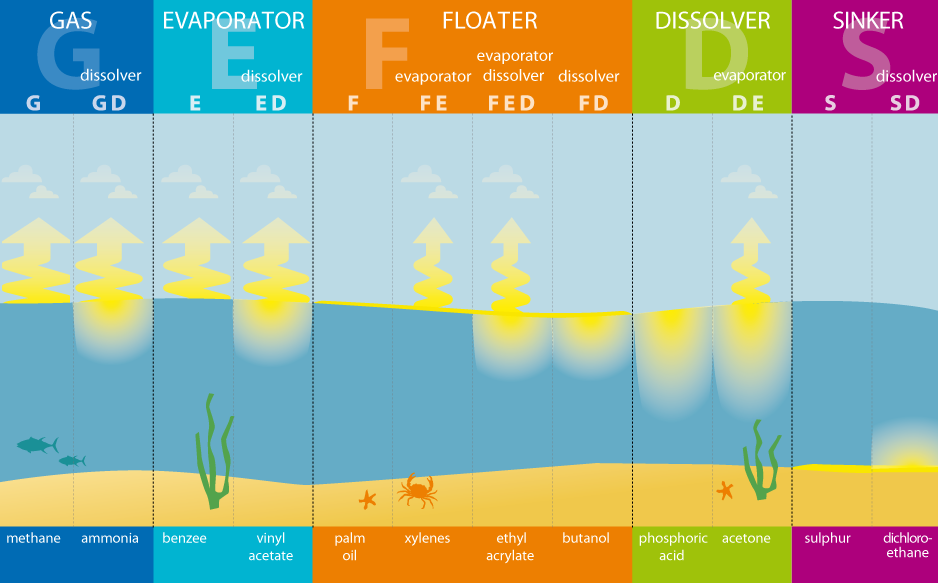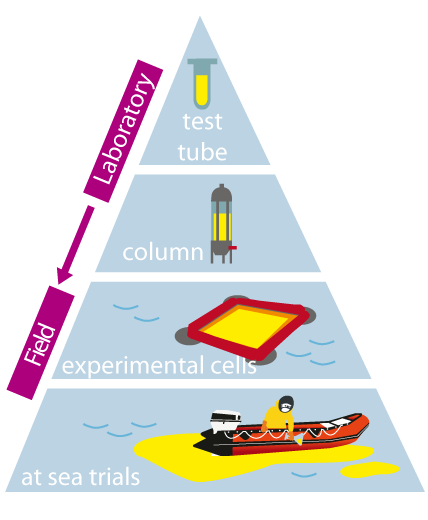
The behaviour of a substance spilt at sea is the way in which it is altered during the first few hours after coming into contact with water. Predicting this behaviour is one of the most important stages in the development of a response strategy. The Standard European Behaviour Classification (SEBC) determines the theoretical behaviour of a substance according to its physical and chemical properties, and classifies it into one of five main:

Most of the time, a substance does not have one
single behaviour but rather several behaviours due
to its nature and environmental processes (wind,
waves, current). For example, ethyl acrylate* is classified
as FED as it floats, evaporates and dissolves.
However, the SEBC code has its limits. It is based
on experiments conducted in the laboratory on pure
products at a temperature of 20°C in fresh water.
These conditions are quite different from those encountered
in the case of incidents at sea, and the actual
behaviour of the product may be quite different
from its theoretical behaviour. Yet the SEBC code remains
a valuable tool for use in the elaboration of spill
response strategies, although it is important to bear in
mind its limitations when using it.
The behaviour of hazardous substances should be tested on different scales, ranging from the laboratory to the field, in order to come close to the actual conditions that may be met at sea. Such experimentation is conducted in different laboratories across the globe, including at Cedre and Environment and Climate Change Canada.
